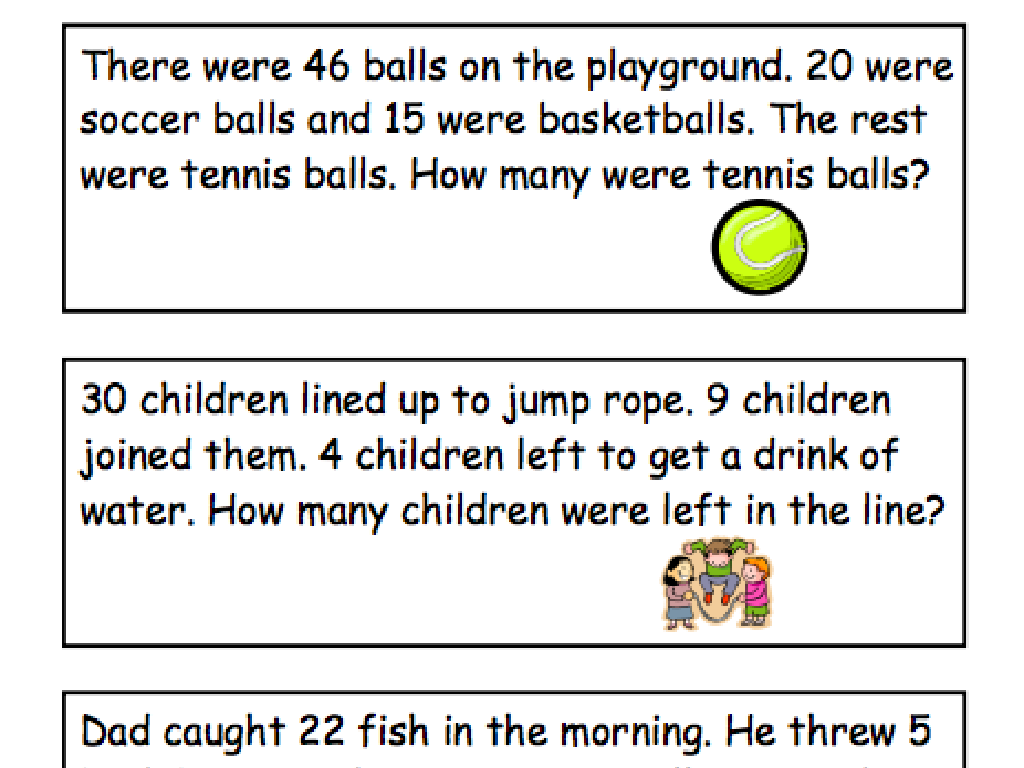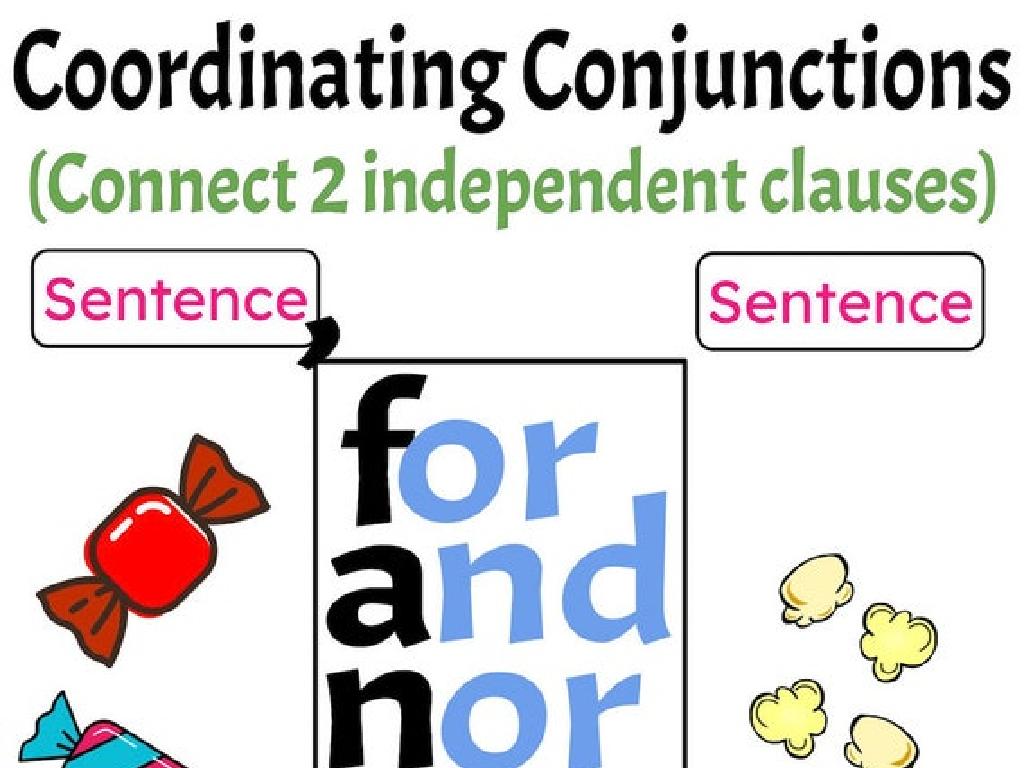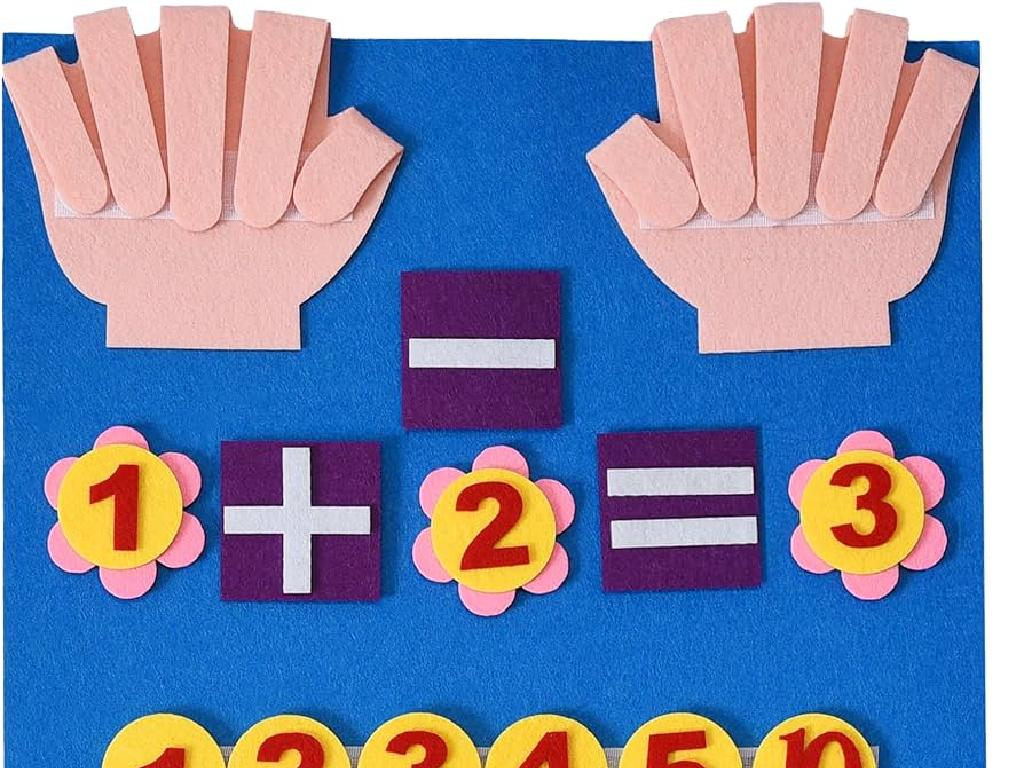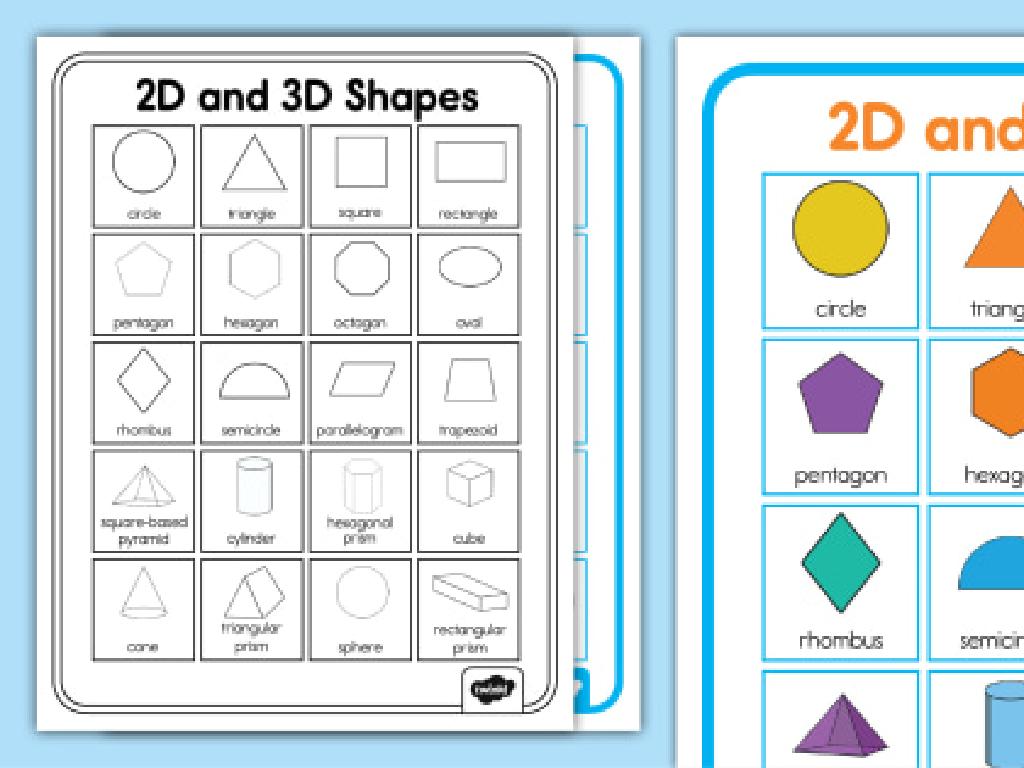Add Using Doubles Minus One
Subject: Math
Grade: First grade
Topic: Addition Strategies Up To 20
Please LOG IN to download the presentation. Access is available to registered users only.
View More Content
Fun with Addition: Doubles Minus One
– Learn a fun addition strategy
– What are ‘Doubles Minus One’?
– If 8+8 is 16, then 8+7 is one less, so it’s 15
– Adding numbers up to 20 easily
– This trick makes adding faster and fun!
– Practice with examples
– Example: 6+6 is 12, so 6+5 is 11
|
This slide introduces first graders to the ‘Doubles Minus One’ addition strategy, which is a useful technique for adding numbers up to 20. Start by explaining that ‘Doubles’ are when we add the same number to itself, like 5+5. Then, show that ‘Doubles Minus One’ means we take our double and subtract one from one of the numbers, like 5+4. This strategy simplifies the addition process and helps students perform quick mental calculations. Encourage the students to think of doubles they already know and then use those to figure out ‘Doubles Minus One’. Provide several examples and practice problems to help them grasp the concept. In the next class, students can share their own ‘Doubles Minus One’ examples and solve practice problems together.
Learning to Add Using Doubles Minus One
– What are doubles in addition?
Doubles are pairs of the same number added.
– Examples of doubles
Like 2+2=4, 3+3=6, and 4+4=8.
– Practice doubles with us
We’ll add doubles together as a class!
– Understand doubles minus one
After learning doubles, we subtract one to find new sums.
|
This slide introduces the concept of doubles in addition, which is a foundational strategy for first graders learning to add numbers up to 20. Start by explaining that doubles are simply two identical numbers added together. Provide clear examples using small numbers to ensure understanding. Engage the class with a practice session where students can try adding doubles together. After they are comfortable with doubles, introduce the concept of ‘doubles minus one,’ where they use what they know about doubles to easily find the sum of numbers like 2+1, 3+2, etc., by thinking of the double and then subtracting one. This strategy helps students build fluency in addition by recognizing patterns and relationships between numbers.
Doubles Minus One Strategy
– Understand almost doubles
– Use doubles to help solve
– Doubles are numbers added to themselves
– If we know 3+3, then 3+2 is one less
– Subtract one from the double to find the answer
– Practice with different numbers
– Try 4+3, knowing 4+4 helps us solve it!
|
This slide introduces the ‘Doubles Minus One’ strategy for addition, which is a useful mental math technique for first graders. Start by explaining that sometimes we encounter addition problems where the numbers are one apart, like 3+2. Highlight that knowing the doubles facts (like 3+3) can make these problems easier because the answer is just one less than the double. Encourage students to use this strategy by first thinking of the double and then just subtracting one. Provide several examples and practice opportunities with different numbers to reinforce the concept. For instance, if they know that 4+4 equals 8, then 4+3 would be one less, which is 7. This strategy builds on their understanding of doubles and helps them solve addition problems more quickly.
Let’s Practice Together: Doubles Minus One!
– Understand doubles addition
– Example: 6+6 equals 12
– Now, what’s 6+5?
– If 6+6 is 12, then 6+5 is 12 minus 1, which is 11
– It’s one less than a double!
– This is because 5 is one less than 6, so we subtract one
|
This slide is for a class activity where students will practice the concept of ‘doubles minus one’ as an addition strategy. Start by reviewing the concept of doubles in addition, where two same numbers are added together. Then, present the example of 6+6 to establish the double. Next, pose the question of 6+5 to the class and guide them to see that it’s just one less than the double they just worked out. Encourage students to use this strategy by thinking of the double first and then subtracting one. This helps in quick mental calculation and reinforces the understanding of addition patterns. Prepare to walk around the class to assist and provide positive feedback as students work through the examples.
Your Turn to Try: Doubles Minus One
– Time to solve problems yourself
– Use ‘Doubles Minus One’ strategy
– If 6+6=12, then 6+5 is one less, so it’s 11
– Pair up and work together
– Help your partner and have fun
|
This slide is an interactive activity for students to practice the ‘Doubles Minus One’ addition strategy. Encourage the students to first think of a doubles fact they know well. Then, guide them to use that knowledge to solve an addition problem that is one less than their doubles fact. For example, if they know that 8+8=16, then 8+7 is just one less, so it’s 15. Pair the students up to promote collaborative learning and ensure they are communicating their thought process with their partner. As they work, walk around the classroom to offer support and praise their efforts. Possible activities could include using manipulatives, drawing visual aids, or creating a doubles minus one chart.
Doubles Minus One Game
– Roll dice twice for doubles
– Subtract one from the double
– If you roll a 4 and another 4, that’s 8. Now take away 1, what’s 8 minus 1?
– Race to find the answer
– Celebrate correct answers!
– Clap and cheer for friends who get it right!
|
This interactive game is designed to help first graders practice the concept of ‘doubles minus one’ in a fun and engaging way. Provide each student with a pair of dice and instruct them to roll both dice. They should then add the numbers to find the double and subtract one to find the new total. Encourage quick thinking and celebrate correct answers to create a positive learning environment. Possible variations of the activity could include using different objects to represent numbers, working in pairs, or creating a point system for correct answers to add a competitive element.
Great Work on ‘Doubles Minus One’!
– Congrats on learning a new strategy!
– ‘Doubles Minus One’ speeds up addition
– For 7 + 6, think 7 + 7 = 14, then 14 – 1 = 13.
– Practice is key – keep it up at home!
– Review often to become an addition star!
– Try with different numbers to master it!
|
This slide is a conclusion and review of the ‘Doubles Minus One’ addition strategy. Reinforce the concept that using this strategy can make adding numbers faster and easier. Encourage the students to continue practicing at home to solidify their understanding. Remind them that practice is essential for mastering any new math skill. Provide examples of how to use the strategy with different numbers and suggest that they try it with their own sets of numbers. Celebrate their effort and progress in learning this new strategy and motivate them to keep practicing and reviewing to become confident in addition.






